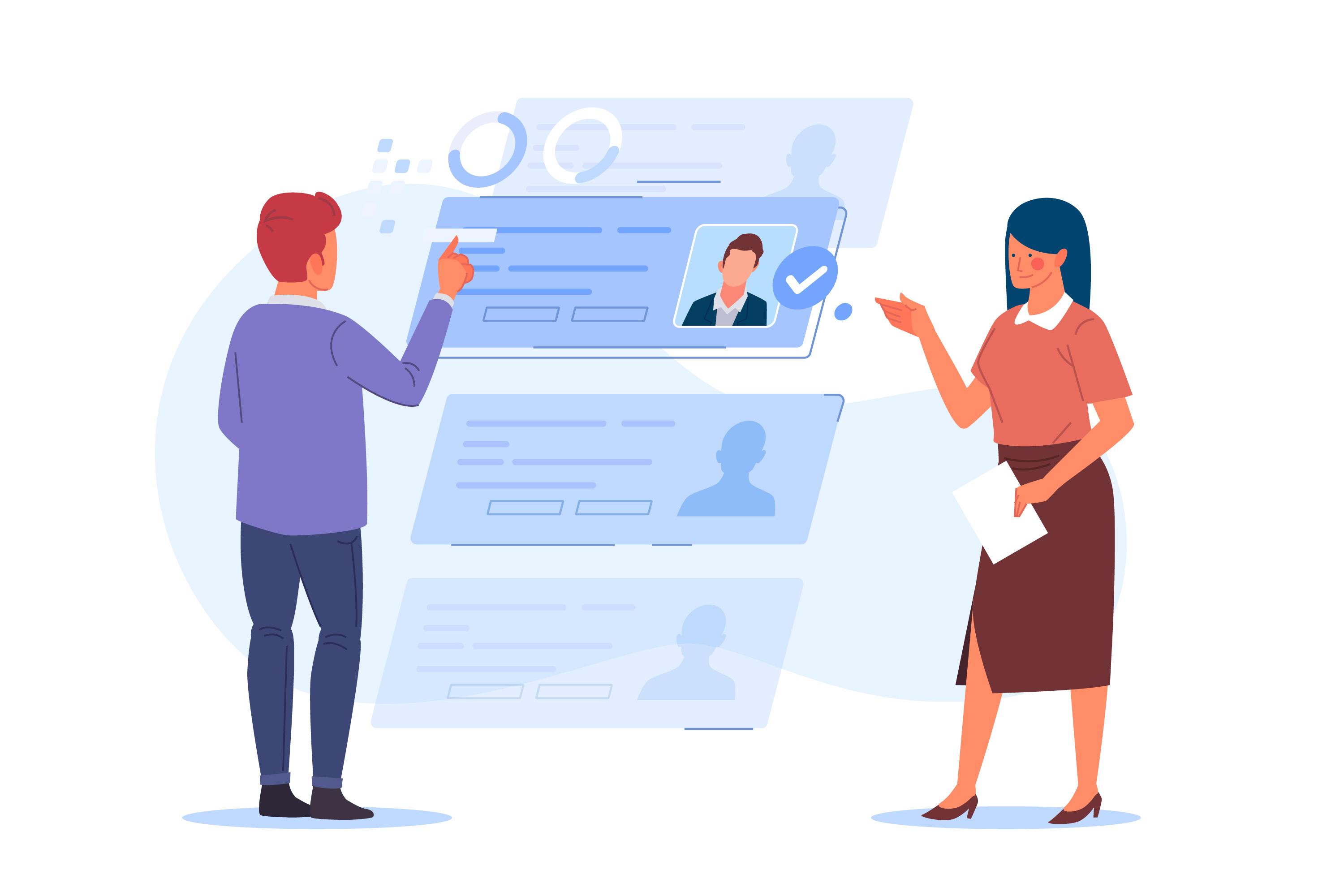HRIS vs. HRMS vs. HCM: What’s the Difference and Which Fits Your Needs?

In the evolving world of HR technology, terms like HRIS, HRMS, and HCM are often used interchangeably. But while they all serve the same broad purpose—streamlining human resource processes—their features and focuses differ. Whether you're a small business exploring HRIS and HR management software or a large enterprise looking for robust HRMS and payroll software, choosing the right system is critical for optimizing your HR operations.
In this article, we’ll break down the distinctions between HRIS, HRMS, and HCM, compare their features, and provide real-world case studies to help you decide which system best fits your organization’s needs.
What is HRIS?
HRIS (Human Resource Information System) is typically the most basic form of HR software. It focuses primarily on the core administrative functions of HR, helping businesses manage and track employee data, benefits, and compliance.

Key Features of HRIS:
-
Employee data management: Centralized records of employee information.
-
Benefits administration: Tracks enrollments, eligibility, and benefits selections.
-
Time and attendance tracking: Often includes clock-in/clock-out features.
-
Compliance management: Helps businesses meet regulatory requirements.
-
Reporting and analytics: Generates basic HR reports.
HRIS is ideal for small to mid-sized businesses that need a centralized database for personnel management without more complex HR functionality.
Read more: Exploring the Best Internet Providers in Swainsboro, GA: Options for Every Need
What is HRMS?
HRMS (Human Resource Management System) is a more comprehensive platform that includes everything found in an HRIS but adds broader HR functions such as payroll, talent management, and performance tracking.
Key Features of HRMS:
-
Payroll management: Automatically calculates salaries, taxes, and deductions.
-
Recruitment and onboarding: Manages job postings, applicant tracking, and new hire onboarding.
-
Performance management: Tracks KPIs, reviews, and employee evaluations.
-
Training and development: Includes LMS (Learning Management Systems).
-
Employee self-service portals: Enables employees to update personal info, request leave, and more.
HRMS and payroll software is ideal for growing businesses that want to integrate administrative and strategic HR functions into one system.
What is HCM?
HCM (Human Capital Management) takes HRMS a step further by focusing not just on managing employees, but optimizing and developing the workforce as a strategic asset. HCM platforms typically support global HR functions and align with the organization’s long-term goals.
Key Features of HCM:
-
All HRIS and HRMS features
-
Advanced talent management: Succession planning, leadership development.
-
Workforce planning: Scenario modeling and forecasting.
-
Analytics and business intelligence: Deeper insights into workforce metrics.
-
Global HR capabilities: Supports multiple countries, languages, and currencies.
HCM is best suited for large or enterprise-level organizations looking to align human capital strategy with business outcomes.
Read more: Server or Cloud for Small Business: Which Is Right for Your Needs?
HRIS vs. HRMS vs. HCM: Feature Comparison Table
| Feature | HRIS | HRMS | HCM |
|---|---|---|---|
| Employee Data Management | ✅ | ✅ | ✅ |
| Benefits Administration | ✅ | ✅ | ✅ |
| Payroll Processing | ❌ | ✅ | ✅ |
| Recruitment & Onboarding | ❌ | ✅ | ✅ |
| Learning & Development | ❌ | ✅ | ✅ |
| Performance Management | ❌ | ✅ | ✅ |
| Workforce Planning | ❌ | ❌ | ✅ |
| Succession Planning | ❌ | ❌ | ✅ |
| Global HR Functions | ❌ | Some | ✅ |
Case Studies: Choosing the Right Solution
1. HRIS: Streamlining Core HR at a Small Tech Startup
Company: ByteSpark Technologies
Industry: Software Development
Employees: 50
Challenge: ByteSpark needed a centralized system for storing employee data, tracking time off, and handling benefits.
Solution: They implemented a simple HRIS and HR management software solution that focused on employee records, compliance tracking, and basic reporting.
Result: The HR team reduced manual tasks by 40%, improved data accuracy, and maintained compliance with local labor laws.

2. HRMS: Growing E-commerce Brand Adopts Integrated Payroll
Company: TrendCart
Industry: E-commerce
Employees: 250
Challenge: Managing payroll, performance reviews, and onboarding processes across multiple locations was becoming increasingly complex.
Solution: TrendCart implemented HRMS and payroll software with built-in modules for recruitment, payroll automation, and performance evaluation.
Result: Payroll processing time was cut by 60%, and employee satisfaction with onboarding improved significantly due to a smoother process.
3. HCM: Enterprise Expansion with Global Workforce Planning
Company: GlobalChem Corp
Industry: Chemical Manufacturing
Employees: 7,000+
Challenge: GlobalChem needed a system that supported international payroll, leadership succession planning, and workforce analytics.
Solution: They selected a cloud-based HCM solution to unify HR processes across 12 countries.
Result: The company achieved consistency in HR operations globally, identified high-potential leaders through succession planning, and improved decision-making with advanced analytics.
Which One Should You Choose?
Choosing between HRIS, HRMS, and HCM depends on your organization's size, needs, and long-term HR strategy.
Choose HRIS if:
-
You're a small business or startup.
-
You need to manage basic HR functions.
-
Your focus is on compliance and data accuracy.
Choose HRMS if:
-
You're a growing company with expanding HR needs.
-
You require HRMS and payroll software in a single platform.
-
You want to improve talent management and employee engagement.
Choose HCM if:
-
You're a large enterprise with a global workforce.
-
You prioritize workforce planning and strategic HR alignment.
-
You need comprehensive analytics and succession planning.
Final Thoughts
Understanding the distinctions between HRIS, HRMS, and HCM is crucial for selecting the right tool to manage and grow your workforce. Whether you're aiming to improve compliance through HRIS and HR management software, streamline payroll with HRMS and payroll software, or align HR strategy with business goals using HCM, the right choice can lead to greater efficiency, stronger employee experiences, and smarter decision-making.
Before making a decision, assess your current HR processes, company size, and future goals. Consider starting with a scalable solution that grows with your organization—and always prioritize platforms that offer integrations, automation, and strong user support.










